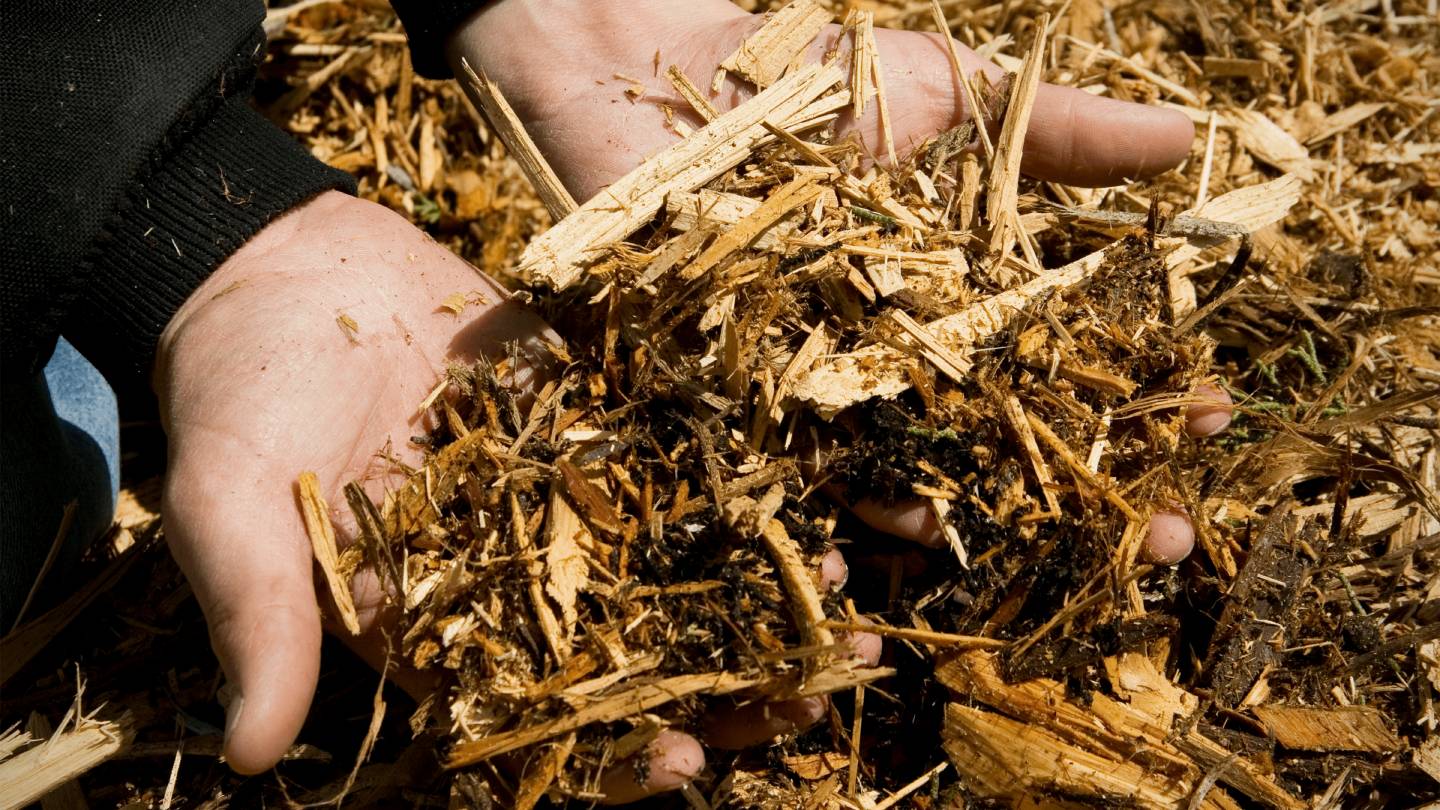Vancouver, BC tree experts offer a crash course in all things mulch.
Everything you Wanted to Know About Mulching But Were Afraid to Ask
Yards are the perfect blend of nature and civilization. There is structure and order created by human hands using the plants and trees that might indeed flourish on their own, but also need tending because they are not in what might be considered their natural habitat. Landscaping and vegetation management tend to the needs of these plants and provide the best possible environment for them to grow in. This is the point where the human must imitate the cycle that would normally happen in the natural world. This is part of the reason for mulching – because it mirrors the cycle of death and renewal present in wilder outdoors.
The Dirt on Mulch: What is it?
Mulch in and of itself actually has a straightforward definition. It is merely something that covers dirt, or the top layer of the ground. It can be organic or inorganic. It comes in small pieces and can be used for nourishment, or protection, or as a deterrent to unwanted plants and animals, or as all of the above. It can be used for both aesthetic and practical purposes.
The Many Different Types of Mulch
Mulch comes in two basic types: organic and inorganic. The discussion of inorganic mulch will be brief as that is not the focus of this particular article, but it is an important part of landscaping. Inorganic mulch is used for beautification and to mark paths, as well as functioning as a weed barrier and deterrent to digging.
Examples of Inorganic Mulch:
- Pebbles
- Crush Dust
- Recycled Rubber
- Landscaping Plastic
Organic mulch, on the other hand, covers all of the above list plus being a natural way to nourish the soil.
Examples of Organic Mulch:
- Wood Chips or Nuggets
- Straw
- Grass clippings
- Compost
- Shredded newspaper
Is Mulching Really That Important?
In the natural order of the wilderness, fallen leaves, sticks, and excrement fall on the ground and are reabsorbed into the soil. This process of decay nourishes the dirt and feeds the plants that grow out of it. There are, however, many other reasons for mulching.
- Moisture: Water is protected from the sun and heat and thereby evaporation by the layer of mulch. This gives plants and trees the chance to absorb the water for themselves.
- Temperature Regulation: Mulching provides protection against the extremes of weather. The soil stays cooler in summer and warmer in winter.
- Weed Barriers: Weeds are less likely to germinate because they cannot get direct sunlight. Any weeds that do grow can be easily plucked from the loose mulch.
- Protects Soil Quality: Not only does the mulch nourish the soil, but it also protects the soil from being compacted which makes it difficult for roots to grow and for water to filter through.
Technique: Mulching Properly
The main thing about mulch is that there is a careful balance between what is helpful and what can do harm. There can be too much of a good thing and there can be so little that it makes no impact. Too much mulch can lead to rotting roots and trunks and infestations of pests and plant disease. Too little can lead to dry crumbly soil and plants that are undernourished and struggle to grow.
In general, mulch should be between 2 and 4 inches in depth. Tree care requires leaving the mulch in a doughnut shape around the tree, leaving the trunk and root flare open to the air.
About VI Tree Service
We at VI Tree Service have been providing excellent customer service and reasonable prices since the start of the company in 1990. With over 50 years of experience, we know how to do a job right the first time. Satisfaction is 100% guaranteed.

